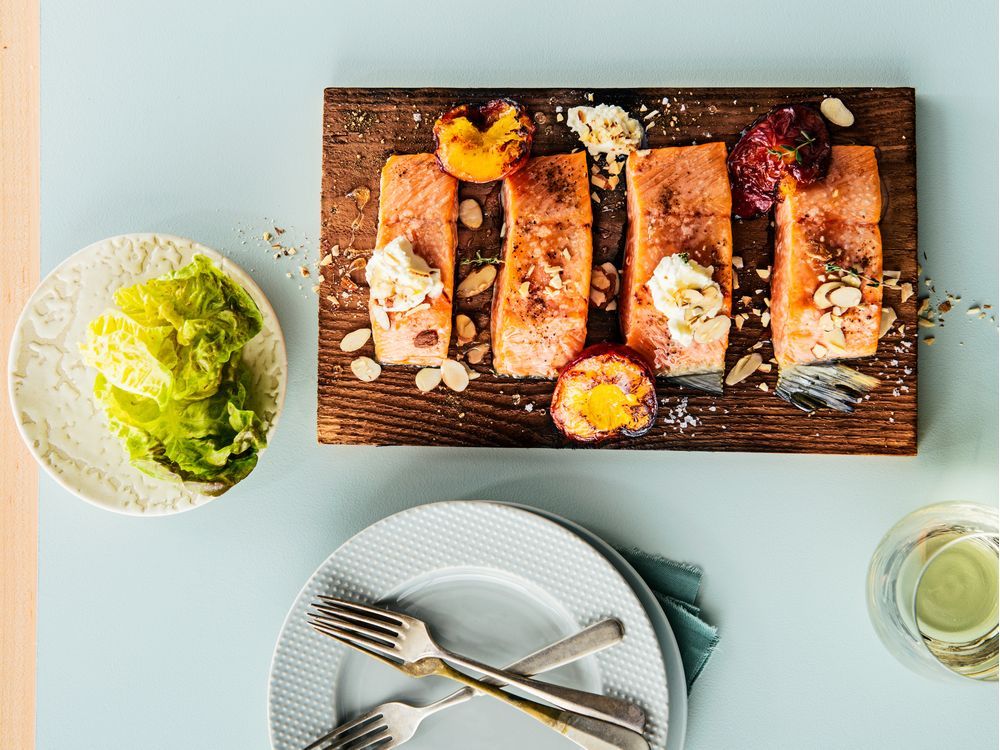Reviews and recommendations are unbiased and products are independently selected. Postmedia may earn an affiliate commission from purchases made through links on this page.
Anthony Gismondi: Fad or fashion, pink wines are in

Opinion: A wine expert’s guide to rosé.
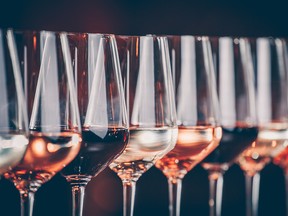
Article content
Last week, catching up with master sommelier Evan Goldstein at the Vancouver International Wine Festival got me thinking about his take on rosé wines in his excellent and timeless book: Perfect Pairings a Master Sommelier’s Practical Advice for Partnering Wine and Food (University of California Press).
Advertisement 2
Article content
The line “a rosé is a rosé except when it is … a rosé!” reveals indecision about the multitude of styles in the market. There is no blueprint from colourless to pink, red, or near black (although, thankfully, the latter is disappearing). It also speaks to how much sugar may or may not be in the bottle. From dry to sweet and everything in between, I believe that the best rosés are often only exceeded by the worst.
Fad or fashion pink wines are in and, in the new age of wine, they’re available in bottles, cans and perhaps the most useful of all formats, bag-in-the-box. It may be the first important category of wine to have escaped the straitjacket of the traditional bottle-and-cork format. But unfortunately, with all the excitement and demand come marketers and copycat producers leaving consumers with a flood of similar-looking forgettable and unforgettable “rosé that is a rosé except when it is not.”
Advertisement 3
Article content
It doesn’t mean you can’t enjoy the rosé renaissance; you need only do some homework. If you didn’t know, the best rosés are now made in the vineyard long before they get to the winery. After that, most rosé begins life much like red wine, inside a tank fermenting on its skins. The trick is to get the juice off the skins quickly, stealing only a hint of colour and with little or no tannin. After that, it’s more or less treated like a white wine till it’s bottled.
Similarly, when served, it should be chilled like white wine. However, I recommend you attune the temperature to the residual sugar level — the sweeter the wine, the cooler the serving temperature. Again, the sweetest should be well-chilled, while the driest is best served with only the slightest chill on the bottle.
Advertisement 4
Article content
When the warm weather finally arrives, consider serving your pinks outdoors in the setting best suited to the nature of these wines. Goldstein prefers the lighter, drier vin Gris style rosé that comes from using more delicate grapes such as Pinot Noir or Grenache. The master sommelier says to try them with “fish, fowl, white meats, grains, pasta and summer produce.”
The off-dry and sweet bottles that dominate the shelves are another choice, and the advice is to serve them the same way you might use a Riesling or a Chenin Blanc. Again, thoroughly chilled and then mingled with big barbecue sauce-covered burgers or ribs, aromatic curries and spicy Asian fare.
Provence is the original benchmark, but several B.C. labels give the glamorous French region a run for its money. I have become hooked on the almost colourless versions of rosé. The palest editions boast the finest in ethereal fruit flavours and finesse with a minimum of residual sugar. Modern techniques have made it possible to achieve Provence-like wines where the grape variety is no longer the crucial ingredient. Instead, freshness, vibrancy and a less-is-more style are the keys to success.
Advertisement 5
Article content
Today we recommend several outstanding efforts from B.C. You can read full-tasting notes at gismondionwine.com, but the wines to look for this month are Orofino 2021 Pozza Vineyard Cabernet Franc Rosé $21.65; Seven Directions 2021 Fruitvale Ridge Vineyard Cabernet Franc Rosé $22.99; Liquidity 2021 Rosé $30; French Door 2021 Rosé $32; Modest Wines 2021 The Eye of the Partridge Pinot Noir Rosé $24.99; Tantalus 2021 Rosé $23.48; and Haywire 2020 Gamay Noir Rosé Secrest Mountain Vineyard 23.99,
Weekend wine picks
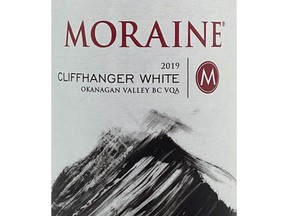
Moraine Cliffhanger White 2021, Okanagan Valley
$18 I 88/100
UPC: 626990127710
The blend changed in 2021, adding 18 per cent Riesling to the mix of 37 per cent Gewürztraminer and 45 per cent Pinot Gris. The style is aromatic and lively, with a large bump of residual sugar. Expect a nose of rose petals and white flowers with a palate of ripe lychee fruit, pineapple and peaches, with a twist of a lemon meringue pie. It’s fresh enough, but the sugar dominates and suggests it could be served with spicy dishes on the patio, well-chilled.
Advertisement 6
Article content
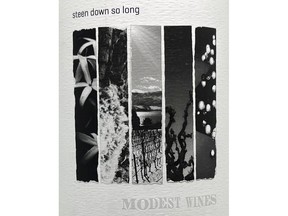
Modest Wines Steen Down So Long Chenin Blanc 2021, Okanagan Valley
$29.99 I 88/100
UPC: 812289348816
The Modest Wines project is a Mt. Boucherie production conceived to make something different to be served on-site at the Modest Butcher restaurant. Each of the wines irreverently builds off a classic wine world style or label, in this case the steen or Chenin Blanc wines of South Africa. Chenin Blanc has a growing following in the Okanagan, and this release is an excellent example of why it’s attracting so much attention. The fruit is from a 25-year-old vineyard in East Kelowna. The style is uber cool and fresh, with a fragrant nose mixing exotic pineapple, citrus and almonds. It’s barely off-dry and creamy, with a bitter grapefruit squeeze in the finish — best with a seafood or vegetable pasta dish.
Advertisement 7
Article content
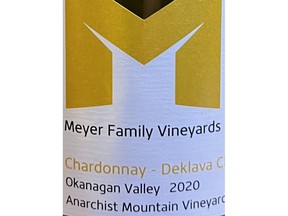
Meyer Chardonnay Deklava Clone Anarchist Mountain Vineyard 2020, Osoyoos, Okanagan Valley
$31.39 I 89/100
UPC: 626990389545
The first single-vineyard Chardonnay to come off Anarchist Mountain was initially planted in 1985 by Anton Dekleva. The unknown clone has since been named the Dekleva clone, spelled wrong on this inaugural Meyer label and is being grown with great success by Checkmate Winery on the Golden Mile Bench. Before 2020, the fruit was blended into Meyer’s Okanagan Valley label. However, winemaker Chris Carson decided the fruit deserved to stand on its own, and so it has rested unstirred for 11 months in 25 per cent new French oak. The nose is fresh with green apple undertones. The palate is creamy with pear butter and a touch of spice. Not quite as polished as other Meyer Chardonnays, but it will be fun to drink earlier.
Advertisement 8
Article content
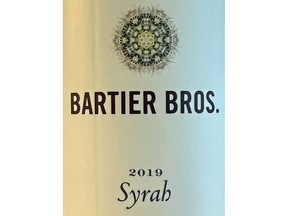
Bartier Bros. Syrah Cerqueira Vineyard 2019, Okanagan Valley
$30.34 I 90/100
UPC: 628055147121
Bartier Syrah is grown within a chip shot of the winery on Cerqueira Vineyard over the Black Sage Gravel Terrace. Bartier specializes in funnelling all the nuances of the desert surrounding his vineyard into the bottle, lending this slick version of Syrah a floral, scrubby, garrigue undertone with a rich mineral finish. The attack is of a similar construct with savoury blueberries and wild silver sage-scented blackberry jam. Youthful and almost drinkable now, this will repay five to seven years in the bottle, if not longer. Lamb burgers are the match now.
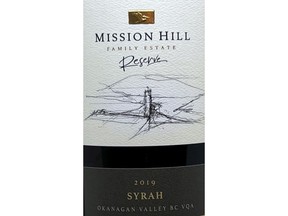
Mission Hill Reserve Syrah 2019, Okanagan Valley
$35 I 90/100
Advertisement 9
Article content
UPC: 776545995124
The Mission Hill reserve wines are both a vineyard and cellar selection, and the fruit is a selection of the top 15 per cent off its estate vineyards. Interestingly with time, 75 per cent of the same vineyard blocks are used, ensuring consistency from vintage to vintage. Two-thousand-and-nineteen is another fine effort, and for keen-eyed drinkers, you may note the label says Syrah this year. I would conclude the style is tighter, drier and more Rhone than Oz. Blueberries and pepper lead the rush along with a unique sleek texture throughout. At 13.5 per cent alcohol, it has terrific balance: it doesn’t attack you and supports the food. Well done. You can drink or hold.
Chef Ned Bell celebrates salmon with this sweet-and-savoury recipe. Utilizing a cedar plank for cooking — which “pays homage to the First Nations Peoples” of the West Coast, according to Bell — this flavourful fish recipe boasts a smokiness thanks to the wood plank, along with rich flavours from ricotta, honey, almonds and more:
Advertisement 10
Article content
Planked Wild Salmon with Nectarines, Thyme, Honey, Almonds and Ricotta
1.5 lb (680 g) salmon filet, skin-on
1 tbsp (15 mL) extra virgin olive oil
1 dash flaky sea salt
1 dash black pepper
4 sprigs thyme leaves only, plus extra for garnish
4 nectarines or apricots halved
2 tbsp (30 mL) honey
4 oz (114 g) fresh whole-milk ricotta
1 garden salad to serve
Soak the cedar plank in water for at least 30 minutes and up to a day before using. Preheat the grill to medium (about 350 F).
Use paper towels to pat the fish dry. Rub all over with olive oil, and season both sides with salt-and-pepper. Sprinkle the thyme leaves over the salmon (leaving some for the nectarines and for the garnish), and press to adhere.
Put the plank on the grill directly over the flames. Cover the grill and allow the plank to heat until starting to just smoke, about 2 minutes. Turn and repeat on the other side.
Advertisement 11
Article content
Add the fish skin side-down to the plank. Add the nectarines cut-side-up. Drizzle the nectarines with honey, sprinkle with most of the remaining thyme leaves and a little salt.
Cover the grill and cook for 7-12 minutes or until fish is almost opaque all the way through and flakes easily, and the nectarines are caramelized and tender. (If the plank gets too hot and ignites, spritz it with water from a spray bottle.)
Alternatively, you can grill the salmon directly on an oiled grill grate for 3-4 minutes per side, and roast the nectarines in a baking dish in a 400 F oven for 12 minutes.
To serve, add a couple of tablespoons of ricotta over each piece of fish, and sprinkle with the almonds. Garnish with thyme. Serve with a garden salad.
Advertisement 12
Article content
Serves four.
Excerpted from Lure by Ned Bell and Valerie Howes. Photos by Kevin Clark. Copyright 2017 by Chefs for Oceans, recipes copyright by Ned Bell. Excerpted with permission from Figure 1 Publishing. All rights reserved. No part of this excerpt may be reproduced or reprinted without permission in writing from the publisher.
Recipe match
A vibrant B.C. Gamay Noir is our pick to tame this rich planked wild salmon served with a mix of fruit, honey, almonds and cheese.
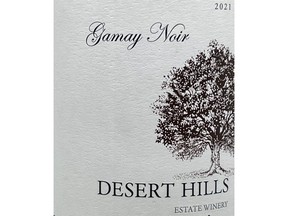
Desert Hills Gamay Noir 2021, Osoyoos, Okanagan Valley, $26
A richer, darker, ripe fruit mixes with baking spices, and a subtle, sweet cured meat and peppery finish should easily take on the salmon.
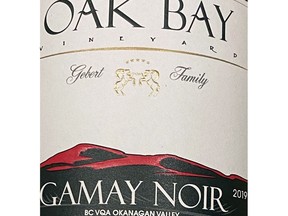
Oak Bay Vineyard Gamay Noir 2020, Okanagan Valley, $18.50
Another darker, wood-framed Gamay with black cherry, blackberries and pink peppercorn spice is ideal for this busy salmon dish.
Source: vancouversun.com


